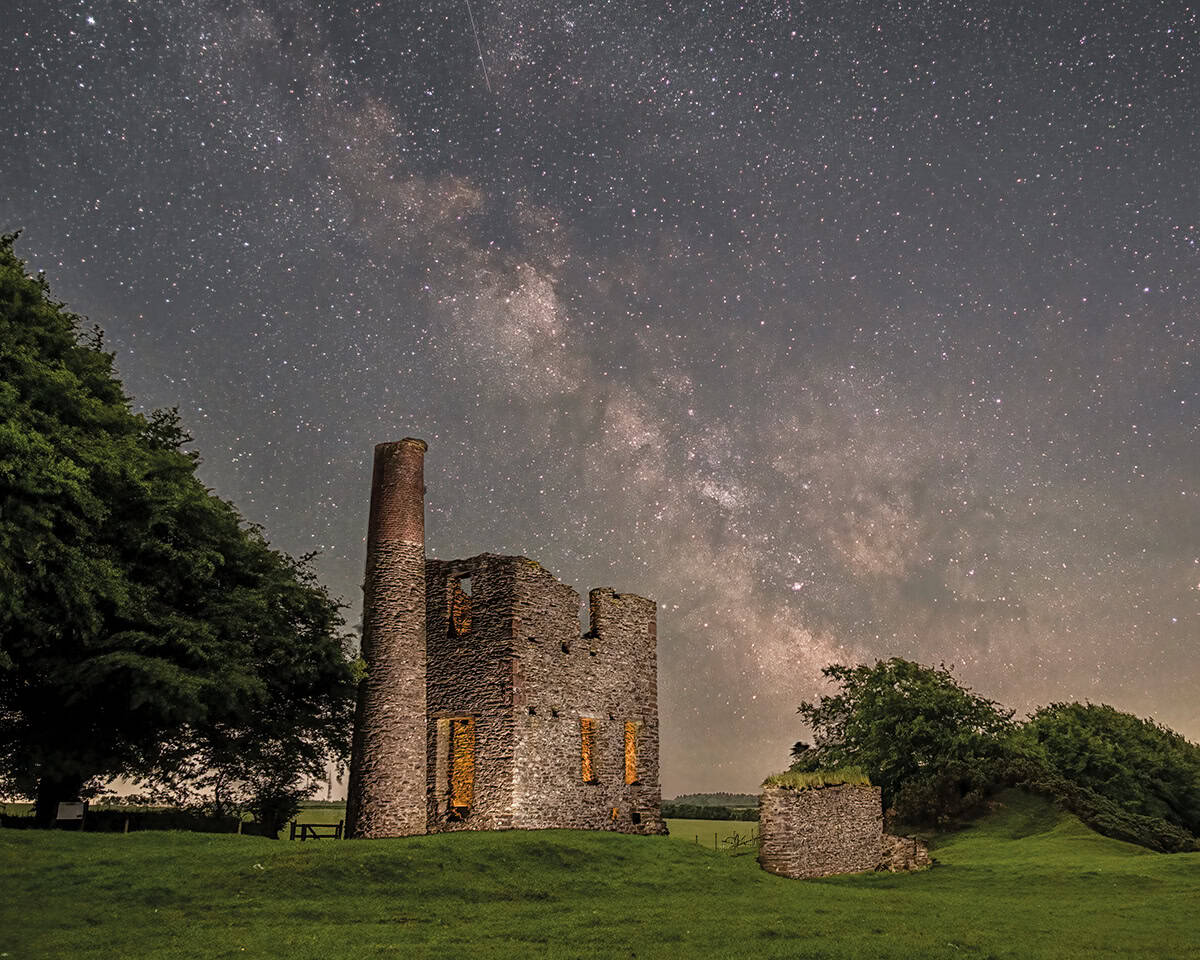Realizing he’d never seen the Milky Way with his own eyes, Colin White joined photographer Shaun Davey on a nighttime expedition to capture the heart of the galaxy

Shaun suggested our initial face-to-face meet should be at around 11 p.m., on a remote track on the flanks of the wild hinterland of Exmoor National Park in Somerset, UK. We were to rendezvous at the rather delightful what3words coordinates of: ///otters.grins.greet near a monument colloquially named “Naked Boy Stone”.
As is usual when I venture onto the moor, I informed my son before setting off. Mobile signals can get a bit iffy above about 300 m, although what I expect him to do from Oxford, more than 150 km away, I’m not altogether sure. In hindsight, I might also have chosen my words more carefully when I told him not to worry about meeting this man because “We’d followed each other on Twitter/X for years”. Perhaps I should have begun by telling him that Shaun Davey is an acclaimed photographer of the night skies.
Under the illumination of our head torches, we set off, traipsing along a branch-strewn trail that followed a section of the disused West Somerset Mineral Line. Built between 1857 and 1864, the rail track was constructed to carry iron ore from the mines of Exmoor down to Watchet Harbour, for onward shipment to Wales and the steel blast furnaces of the Ebbw Valley.
The last trains ran in 1913, and the isolated location was ideal for our purposes, though it did make our journey somewhat perilous – the edge of the unlit path ran along a deep rail cutting. It was amazing to think that it would have been carved out by manual labour alone. However, my first thought was “that’s one hell of a drop if we slip”.
Our destination was a small stone building that had once housed a steam engine, used to raise and lower the miners and to pump water from the tunnels. Illuminated by a handheld LED lamp, it cast a dramatic picture against the stars.
It’s no mean feat for a photographer to capture objects that are both a few metres and a few light-years away in a single image, but this is where Shaun’s vast experience of landscape astrophotography came into play. He set up two tripod-mounted cameras; one to photograph the landscape and the other to capture the sky, each using different exposure times. Correct exposures are governed by three variables: the shutter speed, the lens aperture and the ISO (detector sensitivity). All are adjustable, so picking the right settings is an art.
When it came to photographing the sky, Shaun mounted the camera on a device fitted with the most powerful laser I’ve ever seen outside a laboratory. He calibrated the camera platform by aligning the laser beam with the polar star. I’d never been so aware of the extent of laser collimation until I witnessed the needle-sharp beam projecting deep into the blackness of the heavens. Once the tracking mount has been aligned, the attached camera can precisely follow the motion of celestial bodies as the Earth rotates. Without the tracking tripod, you’d just get blurred slashes caused by unwanted star – or rather Earth – motion.
It’s no mean feat for a photographer to capture objects that are both a few metres and a few light-years away in a single image
After the photos had been taken, Shaun post-processed them with Photoshop and Lightroom to correct for colour and optical distortions (he uses a wide-angle lens that can make straight lines appear curved). Finally, the images were merged to create one stunning photograph.
Light pollution is, of course, the biggest irritant for astrophotographers, which is why Shaun picked a cloudless night and a location within one of the six designated Dark Sky Reserves of the UK. Nevertheless, light pollution was evident even at 2.30 a.m. Some sources were obvious from the direction of the glow: the industry of Wales (50 km away), Tiverton/Cullompton and/or Exeter (all approximately directly south, and at about 19, 23 and 40 km, respectively), and the Sun. In midsummer, when our expedition took place, it’s never far below the northern horizon.
This adventure kicked off after I posted on X that I’d never seen the Milky Way with my naked eye in my life (I’m 70 years old). Shaun replied with a promise that he could knock that one off my bucket list by showing me the galactic core (the brightest region of the Milky Way at the centre of our galaxy). He kept his promise.
- Readers are invited to submit their own Lateral Thoughts. Articles should be between 750 and 800 words long, and can be e-mailed to pwld@ioppublishing.org



